Andrea Tagliasacchi
Google Research
VaxNeRF: Revisiting the Classic for Voxel-Accelerated Neural Radiance Field
Nov 25, 2021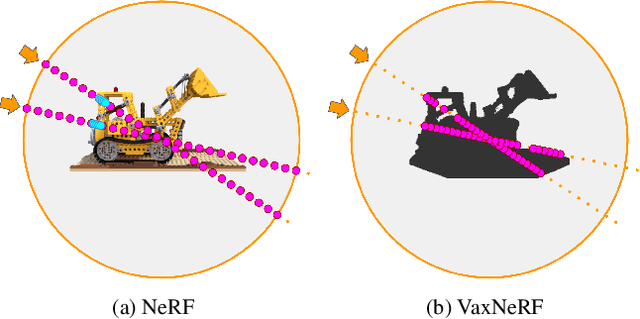
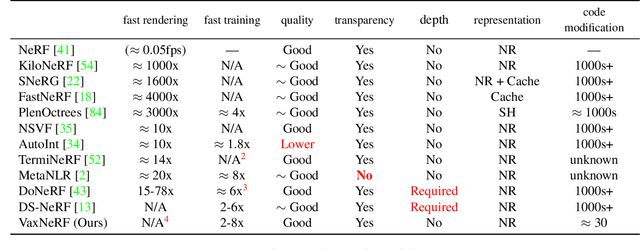
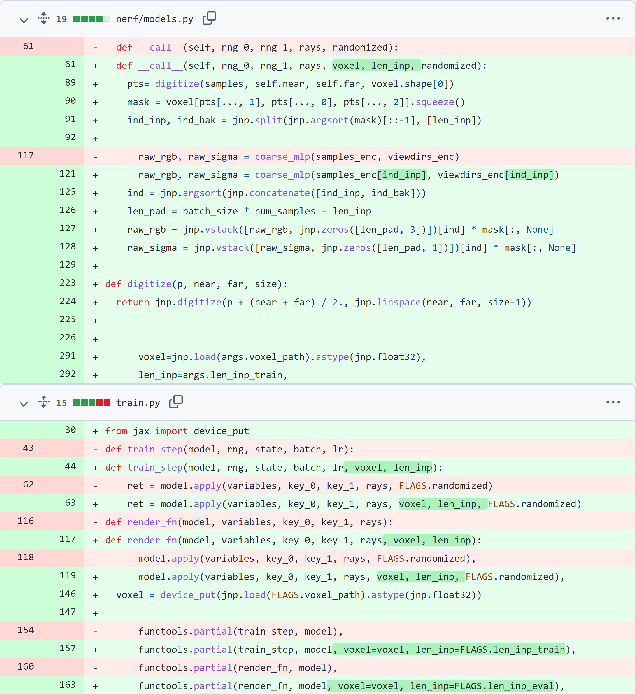
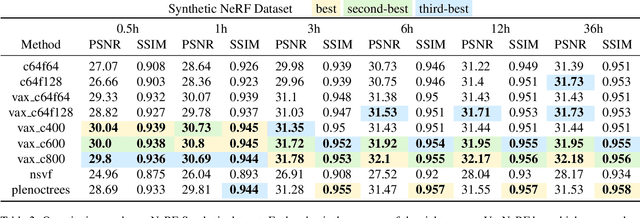
Abstract:Neural Radiance Field (NeRF) is a popular method in data-driven 3D reconstruction. Given its simplicity and high quality rendering, many NeRF applications are being developed. However, NeRF's big limitation is its slow speed. Many attempts are made to speeding up NeRF training and inference, including intricate code-level optimization and caching, use of sophisticated data structures, and amortization through multi-task and meta learning. In this work, we revisit the basic building blocks of NeRF through the lens of classic techniques before NeRF. We propose Voxel-Accelearated NeRF (VaxNeRF), integrating NeRF with visual hull, a classic 3D reconstruction technique only requiring binary foreground-background pixel labels per image. Visual hull, which can be optimized in about 10 seconds, can provide coarse in-out field separation to omit substantial amounts of network evaluations in NeRF. We provide a clean fully-pythonic, JAX-based implementation on the popular JaxNeRF codebase, consisting of only about 30 lines of code changes and a modular visual hull subroutine, and achieve about 2-8x faster learning on top of the highly-performative JaxNeRF baseline with zero degradation in rendering quality. With sufficient compute, this effectively brings down full NeRF training from hours to 30 minutes. We hope VaxNeRF -- a careful combination of a classic technique with a deep method (that arguably replaced it) -- can empower and accelerate new NeRF extensions and applications, with its simplicity, portability, and reliable performance gains. Codes are available at https://github.com/naruya/VaxNeRF .
LOLNeRF: Learn from One Look
Nov 19, 2021
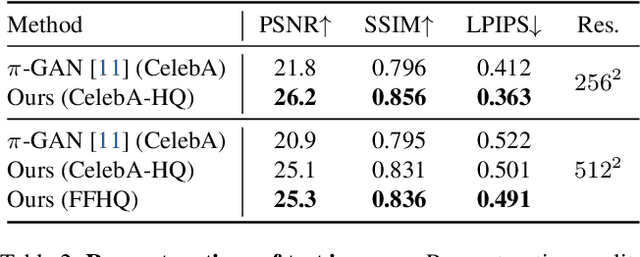
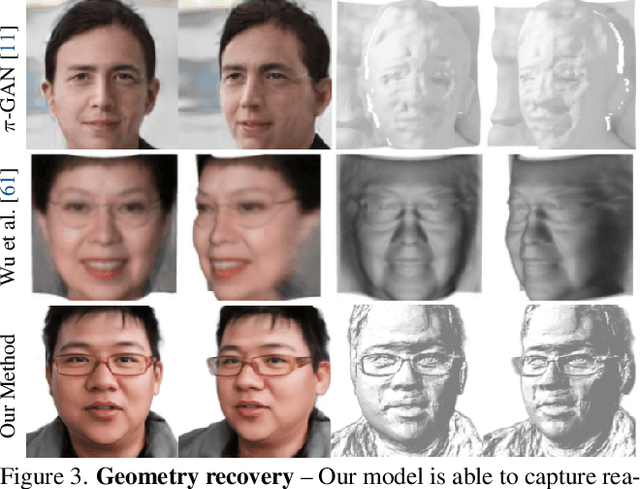

Abstract:We present a method for learning a generative 3D model based on neural radiance fields, trained solely from data with only single views of each object. While generating realistic images is no longer a difficult task, producing the corresponding 3D structure such that they can be rendered from different views is non-trivial. We show that, unlike existing methods, one does not need multi-view data to achieve this goal. Specifically, we show that by reconstructing many images aligned to an approximate canonical pose with a single network conditioned on a shared latent space, you can learn a space of radiance fields that models shape and appearance for a class of objects. We demonstrate this by training models to reconstruct object categories using datasets that contain only one view of each subject without depth or geometry information. Our experiments show that we achieve state-of-the-art results in novel view synthesis and competitive results for monocular depth prediction.
MetaPose: Fast 3D Pose from Multiple Views without 3D Supervision
Aug 10, 2021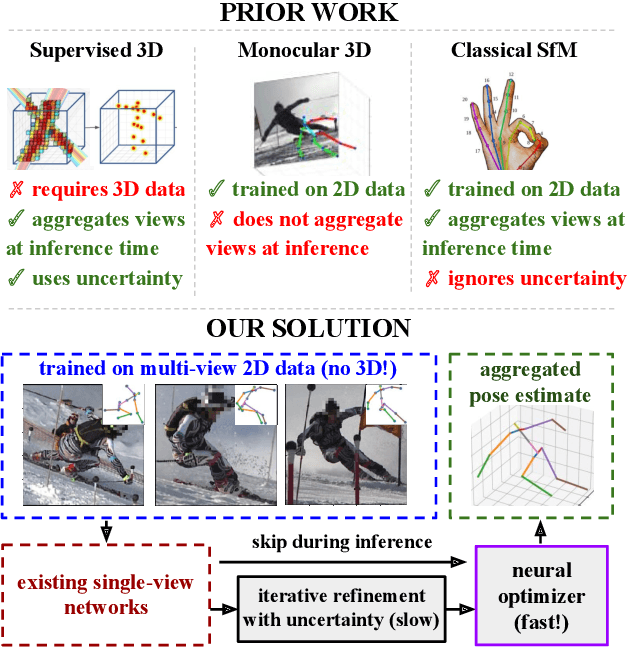
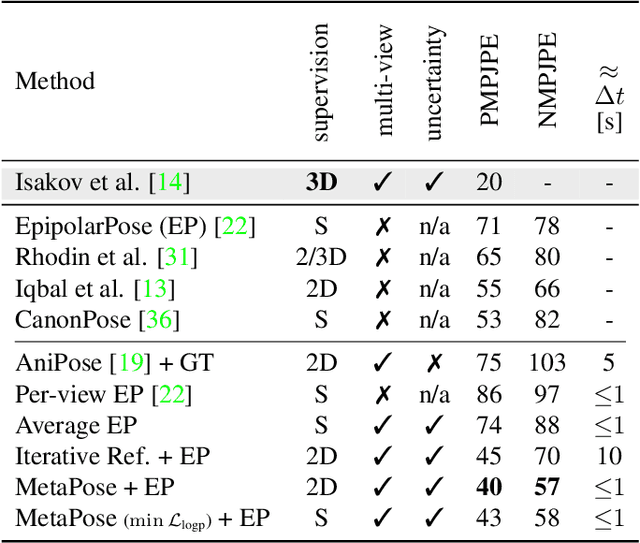
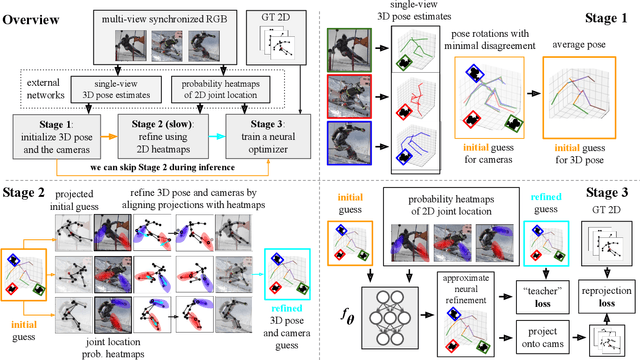
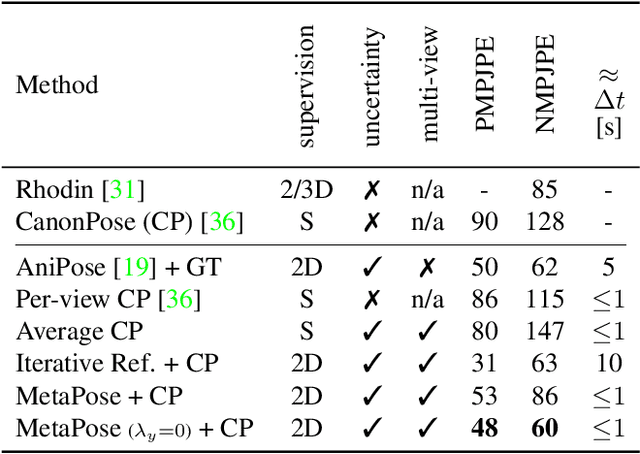
Abstract:Recently, huge strides were made in monocular and multi-view pose estimation with known camera parameters, whereas pose estimation from multiple cameras with unknown positions and orientations received much less attention. In this paper, we show how to train a neural model that can perform accurate 3D pose and camera estimation, takes into account joint location uncertainty due occlusion from multiple views, and requires only 2D keypoint data for training. Our method outperforms both classical bundle adjustment and weakly-supervised monocular 3D baselines on the well-established Human3.6M dataset, as well as the more challenging in-the-wild Ski-Pose PTZ dataset with moving cameras. We provide an extensive ablation study separating the error due to the camera model, number of cameras, initialization, and image-space joint localization from the additional error introduced by our model.
Learning Mesh Representations via Binary Space Partitioning Tree Networks
Jul 02, 2021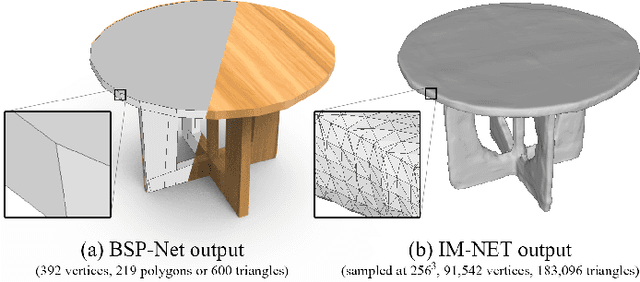
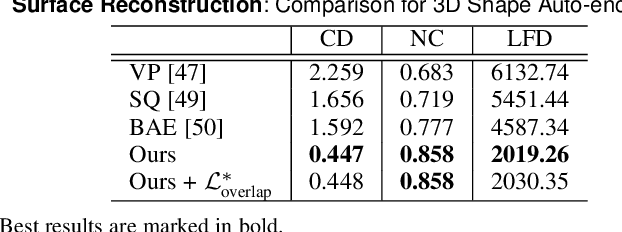
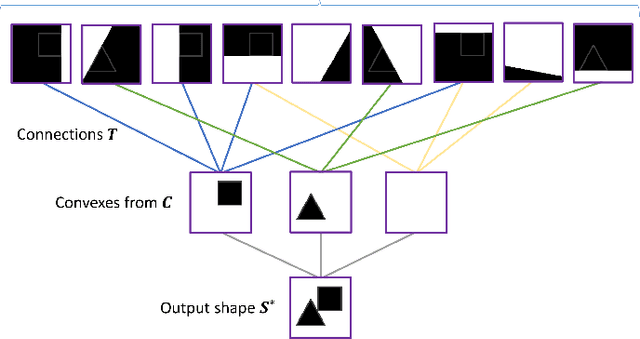
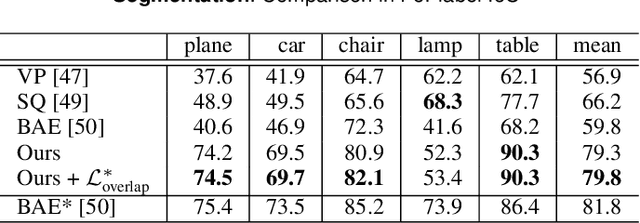
Abstract:Polygonal meshes are ubiquitous, but have only played a relatively minor role in the deep learning revolution. State-of-the-art neural generative models for 3D shapes learn implicit functions and generate meshes via expensive iso-surfacing. We overcome these challenges by employing a classical spatial data structure from computer graphics, Binary Space Partitioning (BSP), to facilitate 3D learning. The core operation of BSP involves recursive subdivision of 3D space to obtain convex sets. By exploiting this property, we devise BSP-Net, a network that learns to represent a 3D shape via convex decomposition without supervision. The network is trained to reconstruct a shape using a set of convexes obtained from a BSP-tree built over a set of planes, where the planes and convexes are both defined by learned network weights. BSP-Net directly outputs polygonal meshes from the inferred convexes. The generated meshes are watertight, compact (i.e., low-poly), and well suited to represent sharp geometry. We show that the reconstruction quality by BSP-Net is competitive with those from state-of-the-art methods while using much fewer primitives. We also explore variations to BSP-Net including using a more generic decoder for reconstruction, more general primitives than planes, as well as training a generative model with variational auto-encoders. Code is available at https://github.com/czq142857/BSP-NET-original.
Deep Medial Fields
Jun 07, 2021
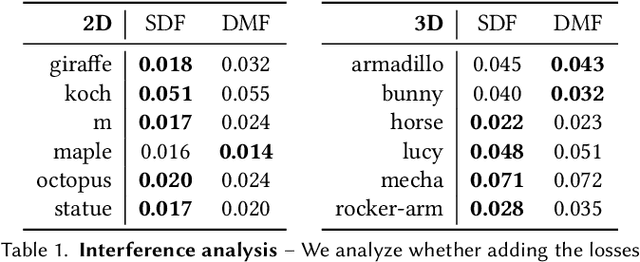
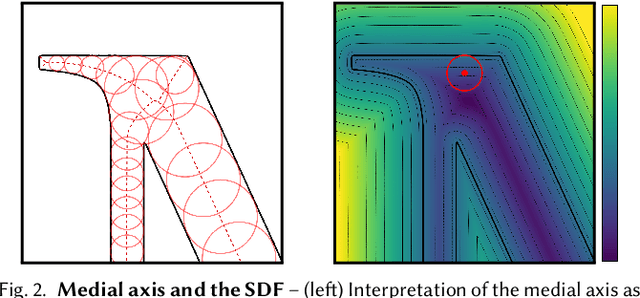

Abstract:Implicit representations of geometry, such as occupancy fields or signed distance fields (SDF), have recently re-gained popularity in encoding 3D solid shape in a functional form. In this work, we introduce medial fields: a field function derived from the medial axis transform (MAT) that makes available information about the underlying 3D geometry that is immediately useful for a number of downstream tasks. In particular, the medial field encodes the local thickness of a 3D shape, and enables O(1) projection of a query point onto the medial axis. To construct the medial field we require nothing but the SDF of the shape itself, thus allowing its straightforward incorporation in any application that relies on signed distance fields. Working in unison with the O(1) surface projection supported by the SDF, the medial field opens the door for an entirely new set of efficient, shape-aware operations on implicit representations. We present three such applications, including a modification to sphere tracing that renders implicit representations with better convergence properties, a fast construction method for memory-efficient rigid-body collision proxies, and an efficient approximation of ambient occlusion that remains stable with respect to viewpoint variations.
Vector Neurons: A General Framework for SO-Equivariant Networks
Apr 25, 2021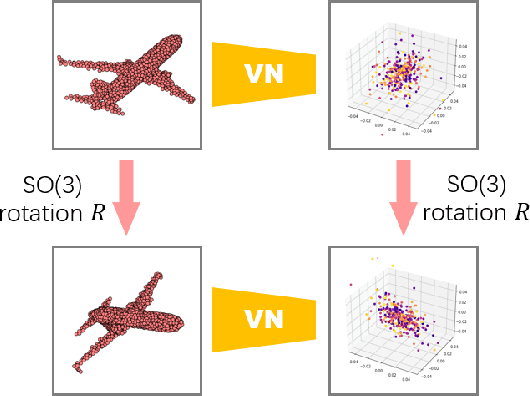
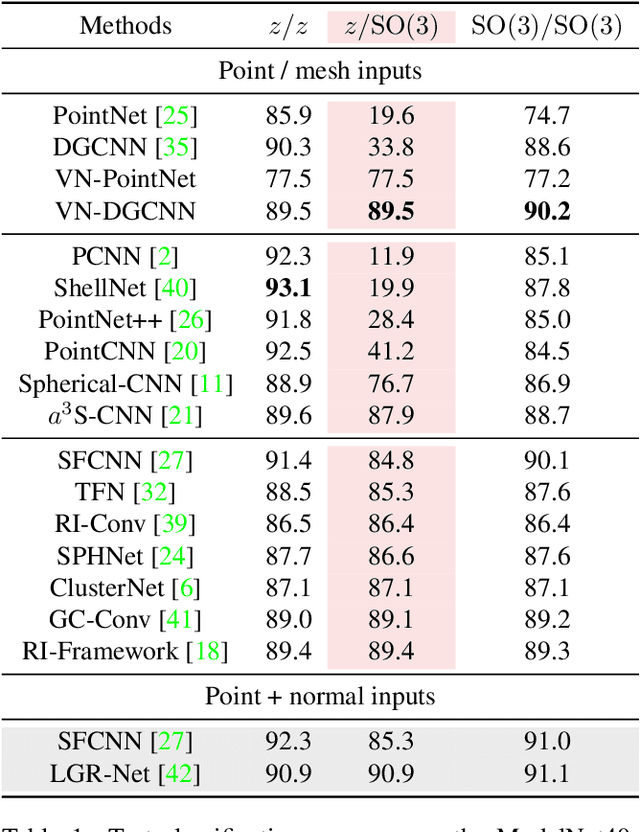
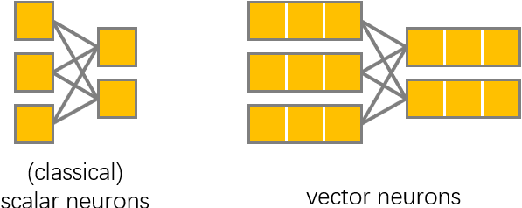
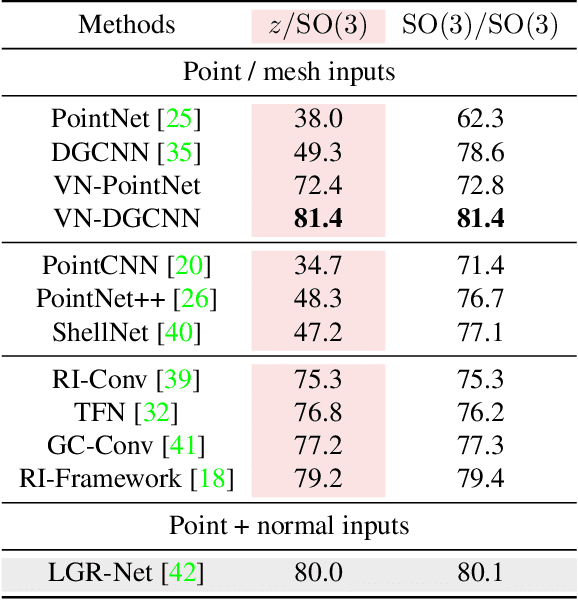
Abstract:Invariance and equivariance to the rotation group have been widely discussed in the 3D deep learning community for pointclouds. Yet most proposed methods either use complex mathematical tools that may limit their accessibility, or are tied to specific input data types and network architectures. In this paper, we introduce a general framework built on top of what we call Vector Neuron representations for creating SO(3)-equivariant neural networks for pointcloud processing. Extending neurons from 1D scalars to 3D vectors, our vector neurons enable a simple mapping of SO(3) actions to latent spaces thereby providing a framework for building equivariance in common neural operations -- including linear layers, non-linearities, pooling, and normalizations. Due to their simplicity, vector neurons are versatile and, as we demonstrate, can be incorporated into diverse network architecture backbones, allowing them to process geometry inputs in arbitrary poses. Despite its simplicity, our method performs comparably well in accuracy and generalization with other more complex and specialized state-of-the-art methods on classification and segmentation tasks. We also show for the first time a rotation equivariant reconstruction network.
COTR: Correspondence Transformer for Matching Across Images
Mar 25, 2021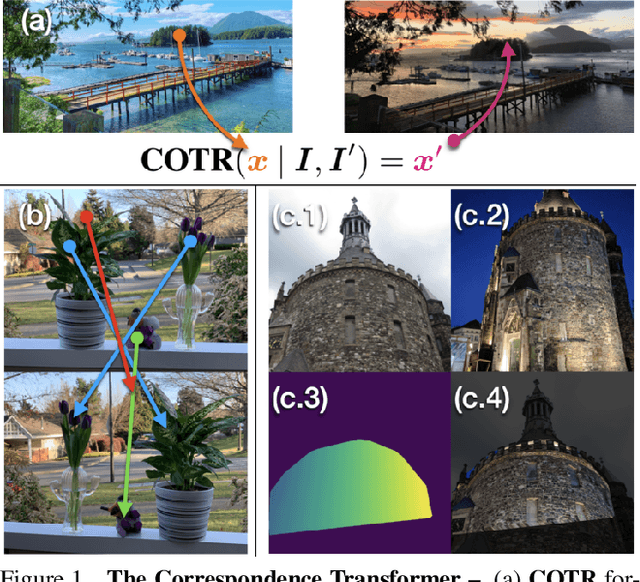
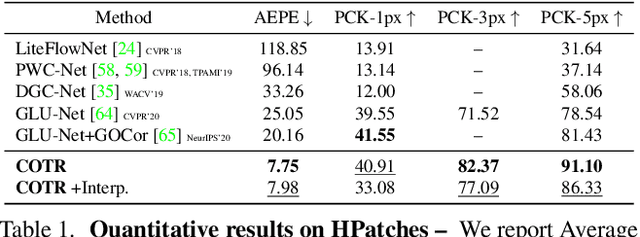
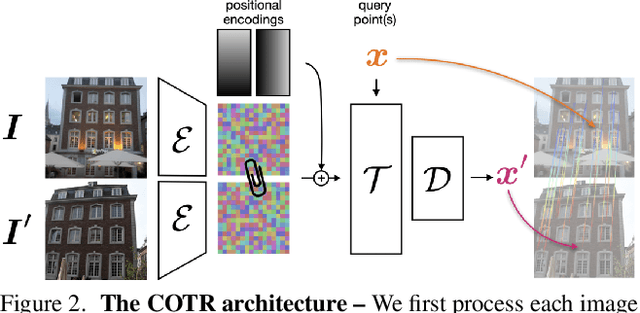
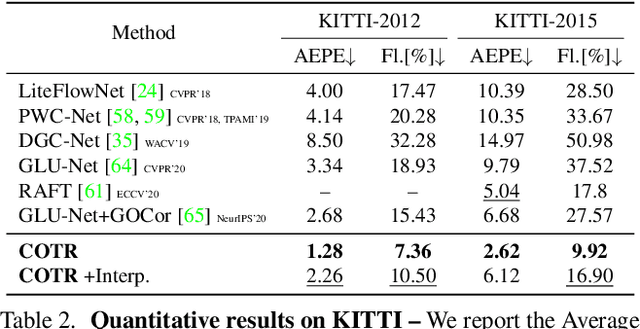
Abstract:We propose a novel framework for finding correspondences in images based on a deep neural network that, given two images and a query point in one of them, finds its correspondence in the other. By doing so, one has the option to query only the points of interest and retrieve sparse correspondences, or to query all points in an image and obtain dense mappings. Importantly, in order to capture both local and global priors, and to let our model relate between image regions using the most relevant among said priors, we realize our network using a transformer. At inference time, we apply our correspondence network by recursively zooming in around the estimates, yielding a multiscale pipeline able to provide highly-accurate correspondences. Our method significantly outperforms the state of the art on both sparse and dense correspondence problems on multiple datasets and tasks, ranging from wide-baseline stereo to optical flow, without any retraining for a specific dataset. We commit to releasing data, code, and all the tools necessary to train from scratch and ensure reproducibility.
Human 3D keypoints via spatial uncertainty modeling
Dec 18, 2020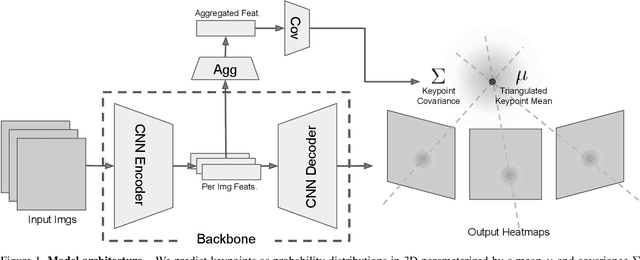
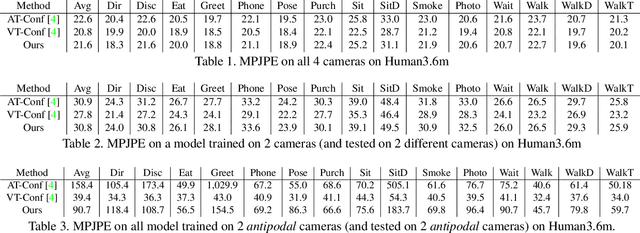
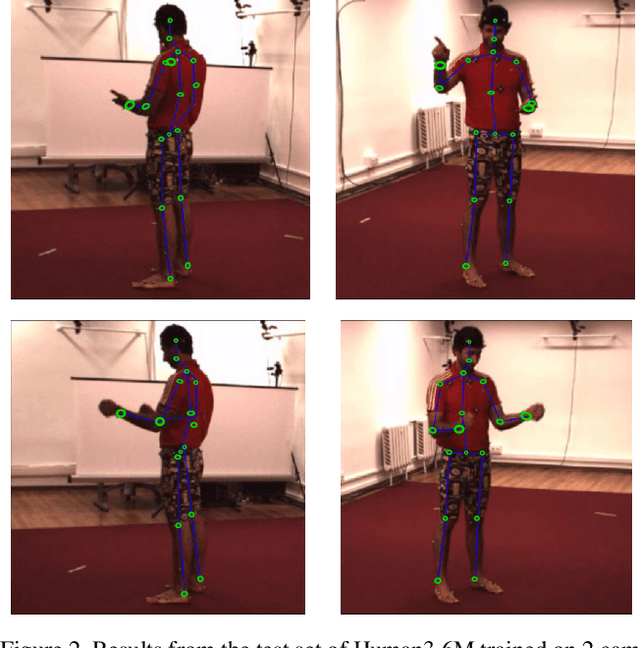
Abstract:We introduce a technique for 3D human keypoint estimation that directly models the notion of spatial uncertainty of a keypoint. Our technique employs a principled approach to modelling spatial uncertainty inspired from techniques in robust statistics. Furthermore, our pipeline requires no 3D ground truth labels, relying instead on (possibly noisy) 2D image-level keypoints. Our method achieves near state-of-the-art performance on Human3.6m while being efficient to evaluate and straightforward to
Canonical Capsules: Unsupervised Capsules in Canonical Pose
Dec 08, 2020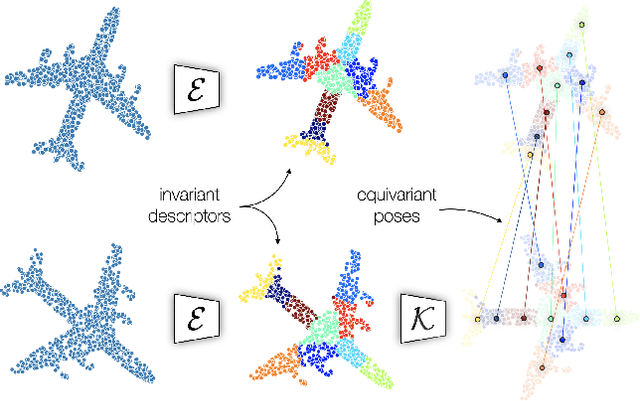


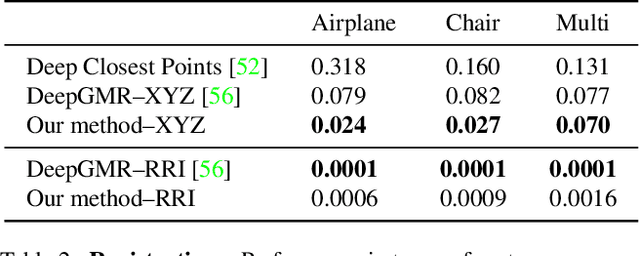
Abstract:We propose an unsupervised capsule architecture for 3D point clouds. We compute capsule decompositions of objects through permutation-equivariant attention, and self-supervise the process by training with pairs of randomly rotated objects. Our key idea is to aggregate the attention masks into semantic keypoints, and use these to supervise a decomposition that satisfies the capsule invariance/equivariance properties. This not only enables the training of a semantically consistent decomposition, but also allows us to learn a canonicalization operation that enables object-centric reasoning. In doing so, we require neither classification labels nor manually-aligned training datasets to train. Yet, by learning an object-centric representation in an unsupervised manner, our method outperforms the state-of-the-art on 3D point cloud reconstruction, registration, and unsupervised classification. We will release the code and dataset to reproduce our results as soon as the paper is published.
Unsupervised part representation by Flow Capsules
Nov 27, 2020
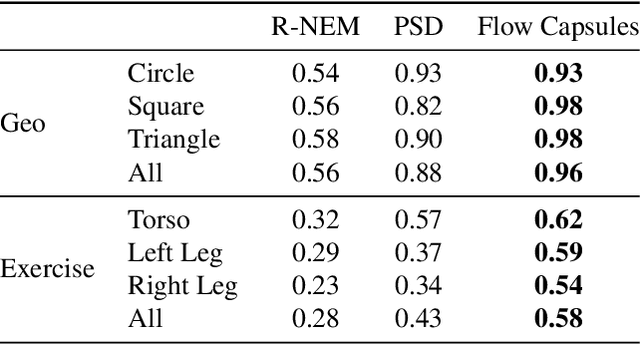
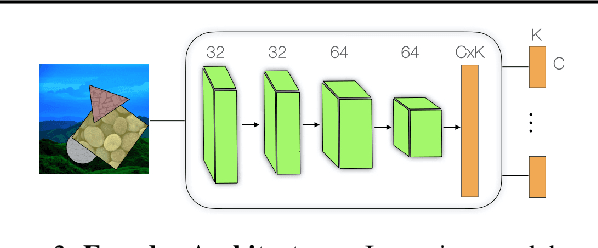

Abstract:Capsule networks are designed to parse an image into a hierarchy of objects, parts and relations. While promising, they remain limited by an inability to learn effective low level part descriptions. To address this issue we propose a novel self-supervised method for learning part descriptors of an image. During training, we exploit motion as a powerful perceptual cue for part definition, using an expressive decoder for part generation and layered image formation with occlusion. Experiments demonstrate robust part discovery in the presence of multiple objects, cluttered backgrounds, and significant occlusion. The resulting part descriptors, a.k.a. part capsules, are decoded into shape masks, filling in occluded pixels, along with relative depth on single images. We also report unsupervised object classification using our capsule parts in a stacked capsule autoencoder.
 Add to Chrome
Add to Chrome Add to Firefox
Add to Firefox Add to Edge
Add to Edge